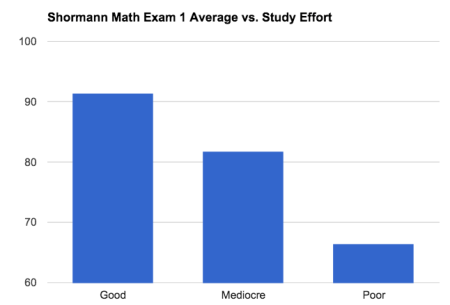This is the first in a series of posts comparing Khan Academy’ s online math courses to our new Shormann Math curriculum. Shormann Math is part of DIVE Math and Science.
s online math courses to our new Shormann Math curriculum. Shormann Math is part of DIVE Math and Science.
When Sal Khan started tutoring his cousins in 2003 using digital whiteboard video lectures, my family’s small business was already in its third year of producing similar products. Since then, both Khan Academy and DIVE have continued to offer digital video lectures for learning mathematics and other subjects, leveraging the ever-improving array of digital content delivery methods. Today in 2017, both Khan Academy and DIVE offer self-paced eLearning math courses. So, while there are obvious similarities between the two, there are also some pretty big differences.
Khan’s Store-Bought Layer Cake vs. Shormann Math’s Homemade Pizza
To begin, it is important to understand that Khan Academy teaches a Common Core-based “layer cake” approach to high school math. Shormann Math, on the other hand, teaches an integrated approach pioneered in Europe and Asia (you know, the countries that always beat us on international math tests), and introduced to the United States by the late John Saxon. John Saxon believed in the common-sense idea that results, not methodology are what mattered most(we’ll explore Khan Academy vs. Shormann Math results in a later post).
With the layer-cake approach, high school math is taught in layers, beginning with Algebra 1. Geometry is next, then Algebra 2. Each course is typically covered in one school year.
With the integrated approach, students learn algebra and geometry together. For example, Shormann Math does not have a separate geometry course, because geometry is integrated into Algebra 1 and 2. A geometry credit is included in Shormann Algebra 1 and 2, so students can take 3 years to complete the two courses and be “on track.”
Using a food analogy, both a store-bought layer cake and a homemade pizza can be delicious. With a store-bought layer cake, everybody gets the same thing, which is not always a bad thing, but can be. With a layer cake, if you just like vanilla, you can focus on eating the vanilla and not the chocolate. Or vice-versa.
With a homemade pizza, at least the one my family has made for years, each bite is an integrated medley of cheeses, meats, and vegetables. It is unique, diverse, and anchored in an amazing story that originated on float trip adventures deep in the Alaskan wilderness. Our homemade pizzas are about more than pizza, just like our Shormann Math courses are about more than math.

Shormann Math, like our family’s legendary pizza, is a savory recipe developed over time with proven ingredients.
From my experience, a layer-cake approach is good for reviewing a particular subject, or specific concepts within a subject. Our CLEP and AP test prep courses employ this method. In other words, the layer-cake approach is good for review, which means Khan Academy math is good for testing your math skills in a particular subject. Khan Academy can help you determine if you have mastered a particular concept for the short-term.
Shormann Math, on the other hand, can help you build fluency in mathematics, which means you develop mastery and you retain it for the long term because you keep using it. In the beginning of every Shormann Math course, we define mathematics as the language of science and a God-given tool for measuring and classifying pattern and shape. I am not sure how Khan Academy defines mathematics, as I couldn’t find a definition anywhere. When you learn a new language, you don’t just learn nouns for a year, then verbs for a year, etc. You learn a little of the basics of everything, then you start putting them into sentences, which you practice. And practice some more. And then you review some more. And practice some more.
Building on fundamentals is how you learn a language, or a sport, or an instrument, or just about anything that you, eventually, hope to excel at. Building fluency takes time. Up next, we’ll explore Khan Academy’s “math procedures” to Shormann Math’s “math story,” followed by real data from real Shormann Math students on how the fluency approach can turn a bad math student into a good one. Stay tuned and thanks for reading!
